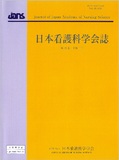Japanese
English
- 販売していません
- Abstract 文献概要
- 参考文献 Reference
要旨
目的:訪問看護師のICTを用いた遠隔からの医師の死亡診断を補助することへの自信感や不安と遠隔死亡診断に用いる看護技術の自信等の関連を明らかにし,遠隔死亡診断が普及するための課題を検討する.
方法:全国1785カ所の訪問看護ステーションの看護師に無記名自記式質問紙調査を実施した.単純集計後,死亡診断に関する認識と看取り体制,看護技術の自信等との関連をみた.
結果:325名を有効回答(18.2%)とした.死亡診断に関する認識として,遠隔死亡診断をできないと思う者は176名(54.2%)であり,理由は「家族が納得しない」が最も多かった.死亡診断に関する認識は,身体観察項目に対する自信,死亡診断等GLや医師法21条の認知等と関連した.
結論:訪問看護師が遠隔死亡診断をできると認識するには,死亡診断関連の情報を得ることや身体観察技術の向上が重要と示唆された.
Objective: To elucidate the relationship between the sense of self-confidence and anxiety of visiting nurses regarding remote death diagnosis by physicians using information communication technology (ICT) and the confidence of nursing skills used for remote death diagnosis, and so on, and consider the issues for the spread of remote death diagnosis.
Methods: Anonymous self-administered questionnaires were administered to nurses at 1,785 visiting nursing stations in Japan. After a simple tabulation, the relationship of perception of death diagnosis to the end-of-life care system, the confidence of nursing skills used for remote death diagnosis, and so on, was examined.
Results: A total of 325 participants provided valid responses (18.2%). In regard to the perception of death diagnosis, 176 participants (54.2%) responded that they did not believe physicians could diagnose death remotely using ICT, and the most cited reason was “the family would not accept it.” The perception of death diagnosis was related to the confidence in physical observations, as well as awareness of guidelines for diagnosing death and Article 21 of the Medical Practitioners' Act.
Conclusions: For visiting nurses to acknowledge that physicians can remotely diagnose death using ICT, it is suggested that information regarding the death diagnosis should be obtained and physical observation skills improved.
Copyright © 2020, Japan Academy of Nursing Science. All rights reserved.


